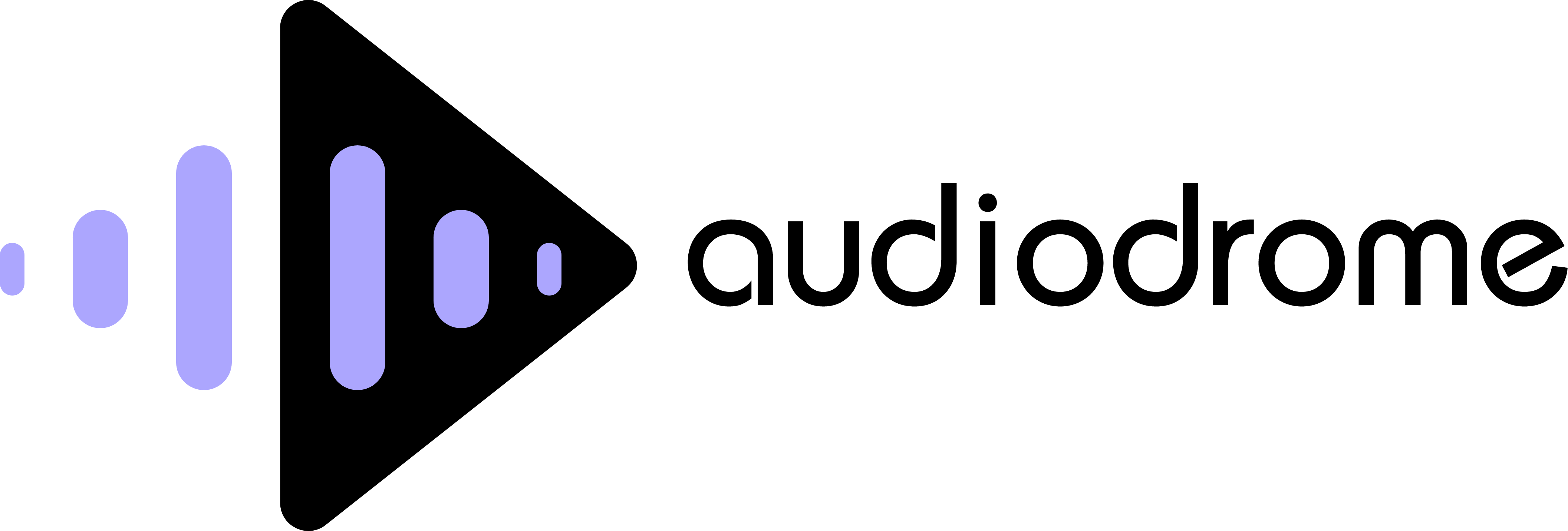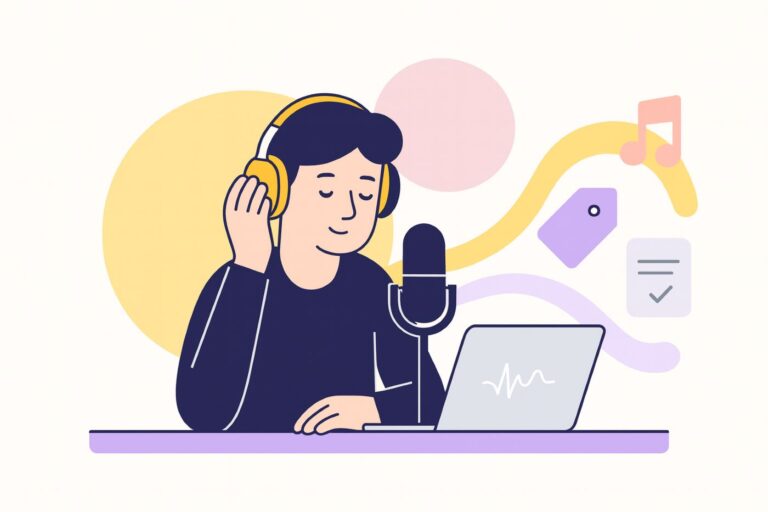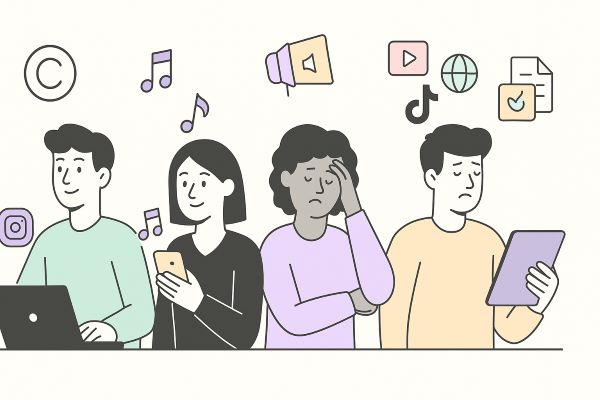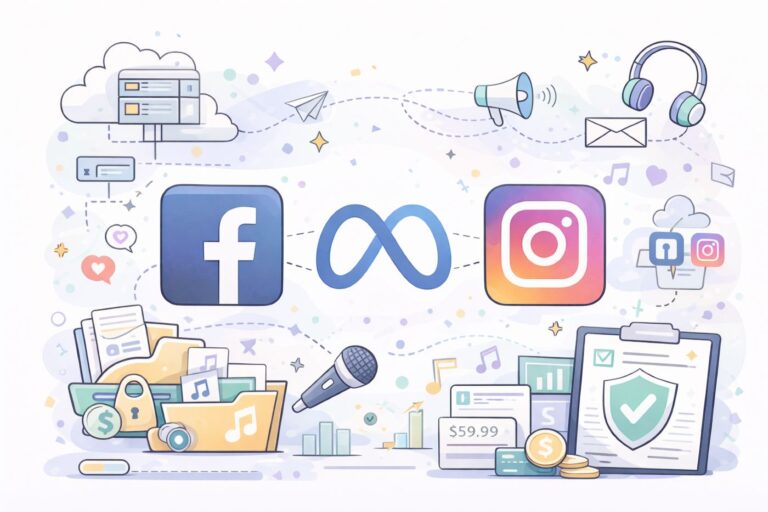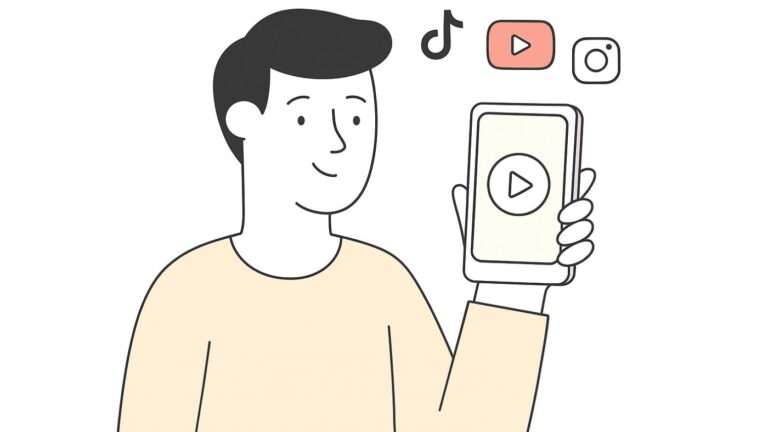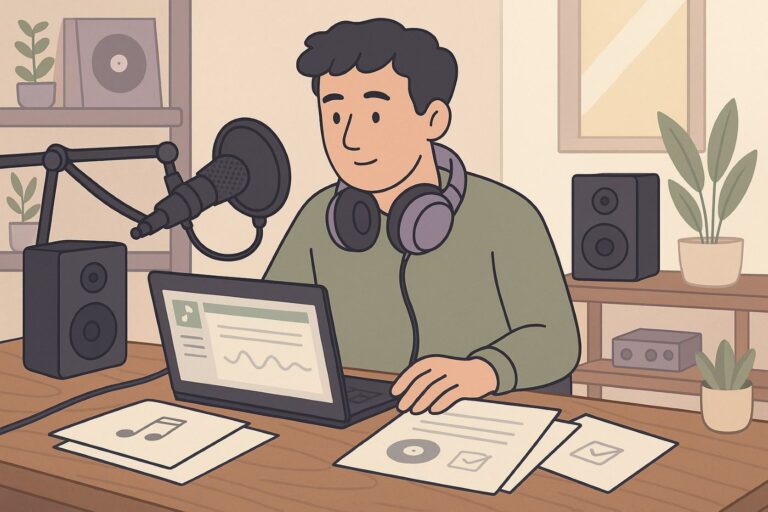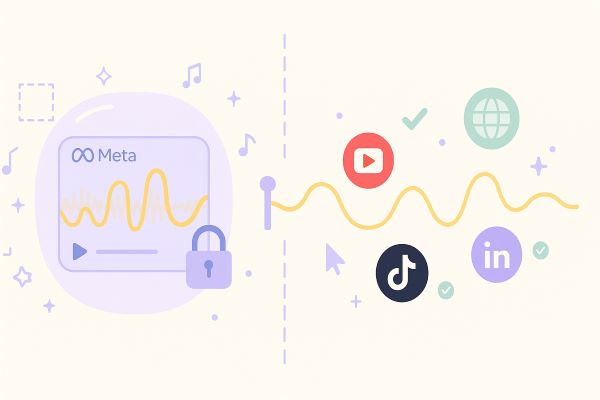How to Remove Copyright Claim on YouTube (and Strike) – Step-by-step
Audiodrome is a royalty-free music platform designed specifically for content creators who need affordable, high-quality background music for videos, podcasts, social media, and commercial projects. Unlike subscription-only services, Audiodrome offers both free tracks and simple one-time licensing with full commercial rights, including DMCA-safe use on YouTube, Instagram, and TikTok. All music is original, professionally produced, and PRO-free, ensuring zero copyright claims. It’s ideal for YouTubers, freelancers, marketers, and anyone looking for budget-friendly audio that’s safe to monetize.
Got a YouTube copyright warning? This guide shows you exactly what to do next: verify the claim, clear it with trims or mutes, or dispute with proof. Learn the 30 day dispute and 7 day appeal clocks, avoid strikes, and protect revenue while you fix it.
Claims vs. Strikes (Know the Difference)
A Content ID claim happens when YouTube’s system matches your upload to a rightsholder’s reference. The owner then chooses a policy that blocks viewing, runs ads to monetize, or tracks stats. Policies can vary by country, so one video can show different outcomes across regions.
A claim usually affects only the video, not your channel status. It is not a strike. If you dispute without a valid basis, the owner may instead send a copyright removal request, which can lead to a strike. Check the claim details in Studio before you act.
A copyright strike follows a legal takedown request. YouTube removes the video and records a strike on your channel. You can resolve a strike by getting a retraction from the claimant, submitting a counter notification, or waiting ninety days after completing Copyright School.
Strikes carry real channel penalties. Three strikes within ninety days can trigger termination. Deleting the video does not clear a strike. Read the notice carefully, keep your documentation ready, and choose the most appropriate path to resolution based on your rights and risk tolerance.
Diagnose the Claim (Inside Studio)
Open YouTube Studio and go to Content. Click the video that shows Copyright in the Restrictions column, then open Restrictions to review the claim panel. From there, you can move into the detailed claim screen to take action or continue reviewing.
%201.jpg)
Click See details to view the claimant, the exact timestamps that match, and the current policy that affects the video or specific countries. This page is where you confirm what is blocked, monetized, or tracked and decide whether to edit, dispute, or appeal.
%202.jpg)
How to Remove a Copyright Claim (Step-by-Step)
Open the claim in YouTube Studio by going to Studio → Content → Restrictions .

See details, then note the timestamps and the current policy for your video and any affected countries.

Choose the fastest auto-clear fix in the claim panel.
.jpg)
These tools clear the claim when you remove or replace all matched content in the flagged range:
Use Trim out segment to cut the exact matched portion from your video. Check the start and end times shown in the claim, extend the trim slightly if needed to cover fades, save your edit, then let processing finish. After processing, confirm that the claim no longer appears.

Use Replace song to swap the claimed music with a track from the YouTube Audio Library. Apply the replacement across the full claimed range, preview the result to ensure coverage, then save your edit. When the replacement fully covers the match, the claim clears after processing completes.

Use Mute song to mute the claimed music from the flagged segment. This tool targets the music in that range and may affect other sounds in the mix. Review the preview carefully, then save your edit and wait for processing before you recheck the claim status.

If you have the rights or the match is wrong, file a Dispute instead of editing. Dispute only with a valid basis such as your ownership or permission, a copyright exception, or a clear mismatch. After submission, the claimant has up to 30 days to release the claim, uphold it, or send a takedown.
Dispute a Content ID Claim on YouTube (Step-by-Step)
Use the steps below to file a precise, policy-compliant dispute in YouTube Studio.
Step 1. Open the Dispute action in Studio
Go to YouTube Studio → Content → open the claimed video → Restrictions → See details. In Actions, click “Dispute”.

Step 2. Confirm you meet YouTube’s eligibility requirements
YouTube shows an eligibility screen with examples of reasons that are not valid. Check the box to confirm your dispute is not based on those reasons, then continue.

Step 3. Choose the correct reason for your dispute
Pick the main basis for your rights. The options are Original content, Licence, Copyright exception such as fair use, or Public domain. Select the one that matches your situation and continue.

Step 4. Confirm the requirements for your reason
YouTube may ask you to confirm that you have permission or that your licence covers this use, including any territory or usage limits. Tick the confirmation box to proceed.

Step 5. Write your rationale and sign
Explain clearly why you have the right to use the content. Include licence identifiers, links to licensor dashboards, or a short fair-use explanation. Check the three acknowledgements and sign with your full legal name. Submit the dispute.

Need faster resolution for a blocked claim? → Escalate to Appeal
If your video is blocked by a Content ID claim, you can skip the initial dispute and start with an appeal. The claimant then has seven days to respond. This option moves faster but increases takedown and strike risk if the claimant rejects your appeal.

Monetization while you fight the claim (the 5-day rule)
If you file a dispute or an appeal within five days of the claim, YouTube holds all ad revenue from the claim date. If you file after five days, revenue is held only from your filing date. After resolution, YouTube pays the appropriate party.
.jpg)
What happens next
For a Dispute, the claimant has 30 days to release the claim, reinstate it, or request a takedown. If they do nothing, the claim expires and YouTube releases it. For an Appeal or Escalate to appeal, the claimant has 7 days to act, and a valid removal request can lead to a strike. During a dispute or appeal, ad revenue is held and paid to the appropriate party after resolution.
If any label on your screen differs from these screenshots, keep the same sequence. Open Actions, pick your legal basis, follow YouTube’s prompts, and submit with complete, accurate information.
Appeal a Content ID Claim after Your Dispute Was Rejected (Step-by-Step)
If your dispute is rejected, you can file an appeal, which starts a seven-day window where the claimant can release the claim or request a takedown, and they can also choose a scheduled removal that you can avoid only by canceling your appeal.
Step 1. Confirm the status in YouTube Studio
Open Studio and go to Content. Find the video that shows Copyright under Restrictions.

Hover to see the message that says Dispute rejected, then open See details. This confirms you are in the appeal stage and not the initial dispute stage.

Step 2. Open the appeal action
Inside the claim details, open Take action. You will see editing tools like Trim out segment, Replace song, and Mute song. Choose Appeal only if you have rights or a valid exception. The appeal stage gives the claimant seven days to respond.

Step 3. Acknowledge the risks
YouTube explains that an appeal can lead to a copyright removal request. Read the warning and tick the confirmation box before you continue. The claimant can request an immediate takedown or a scheduled takedown during this stage, which can lead to a strike if it proceeds.

Step 4. Enter your contact information
Provide your full legal name and accurate contact details so YouTube and the claimant can reach you. These details are required for a valid appeal submission.

Step 5. Write a clear rationale
Explain why you have the right to use the content or why an exception applies. Address transformation, purpose, amount used, and substitution in plain terms. Provide any license references or proof you can link. Your explanation goes to the claimant for review during the seven day window.

Step 6. Confirm required statements and sign
Read each acknowledgement, confirm you understand them, and sign with your full legal name. These statements confirm you understand the legal implications of an appeal and consent to share your contact details with the claimant.

Step 7. Submit the appeal and verify the confirmation
After you submit, YouTube shows a confirmation that the appeal was sent to the claimant. It states that the claimant has seven days to respond. If the claimant does not respond within seven days, the claim is released automatically.

Step 8. Track the seven day timer and monetization hold
Back on the video list, you should see Appeal under review with an expiry in seven days. You may also see that revenue is being held in escrow during the review. When you file an appeal within five days of the claim, revenue is held from the claim date. If you appeal after five days, revenue is held from the date you appealed. When the case resolves, YouTube pays the appropriate party.

What outcomes to expect after you appeal
The claimant can release the claim or request a copyright removal. They can also choose a scheduled removal that gives you seven days to cancel your appeal and avoid a strike. If they do nothing, the claim expires after the seven day window and YouTube releases it. Keep an eye on email and Studio notifications during this period.

If a scheduled removal is issued
You can cancel your appeal within seven days to prevent the takedown and strike. The Content ID claim will remain on the video if you cancel. Suppose the takedown proceeds and you believe it is a mistake. In that case, your next option is a copyright counter-notification, which starts a separate legal timeline of ten United States business days for the claimant to show court action.
Proof of status to keep for your records
Save a PDF of the appeal confirmation, the claim details page, and any licenses or permissions. These records help if you need to contact the claimant, your licensor, or YouTube support for documentation checks during or after the seven-day review.
Notes on timing and revenue
During an appeal, you may see the escrow icon in Studio. This means YouTube is holding revenue while the claimant reviews your case and will pay the correct party after the resolution. This display is normal during the seven-day review.
Result
When the seven-day period ends, you will see one of three results in Studio. The claim is released, and the restriction clears. The claim turns into a removal request, which can cause a strike. The claimant uses a scheduled removal, which gives you seven days to cancel your appeal to avoid the strike. Watch the status line and email closely until the case closes.
What If a Strike Happens?
Pick one path to resolve it based on your rights, your risk tolerance, and how quickly you can act.
Request a retraction from the claimant if you can reach them directly. Ask them to withdraw the removal request so YouTube can clear the strike and restore the video. This is often the fastest fix when a licensor or distributor agrees that you have permission.

Submit a copyright counter-notification only when you believe the takedown was a mistake or your use is allowed by law. YouTube forwards a valid counter to the claimant, who then has ten United States business days to show evidence of court action or the video returns and the strike clears.

Let the strike expire if neither retraction nor a counter makes sense for you. Complete Copyright School and keep your channel strike count below three. After ninety days, YouTube removes the strike from your channel and the penalties tied to it fall away.

Resolve a Copyright Strike on YouTube (Step-by-Step)
Use the steps below to handle a copyright strike in Studio with clear documentation.
Step 1. Open the strike notice and review your options
In YouTube Studio, open the strike banner for the removed video. Read the summary that explains what happened and what you can do next. This screen confirms that the video was removed after a copyright takedown and shows the three resolution paths: request retraction, submit a counter notification, or let the strike expire after ninety days with Copyright School.

Step 2. Open the counter-notification workflow
If you believe the takedown was a mistake or your use is allowed by law, open Actions and choose Submit counter notification. A counter notification asks YouTube to restore the video unless the claimant files a court action. This is a legal process, so proceed only if you are confident.

Step 3. Acknowledge the legal requirements
Read the explanation of what a counter notification means. Check the box to confirm that you understand the implications and want to continue. YouTube will forward your submission to the claimant, which may include your contact information.

Step 4. Enter accurate contact information
Provide your full legal name, phone, email, and physical address. This allows the claimant to reach you and is required for a valid counter-notification. Incomplete or false details can invalidate your request.

Step 5. Write your rationale and sign the statements
Explain clearly why the removal was a mistake or why you have the right to use the content. If you used licensed material, include identifiers or links that prove permission. If you rely on a copyright exception like fair use, describe your purpose, transformation, and why the video is not a substitute for the original. Tick the required legal statements and sign with your full legal name, then submit.

What happens after you submit
YouTube forwards your counter-notification to the claimant. They have ten United States business days to reply with evidence of legal action to keep the video offline. If they do not provide that evidence in time, YouTube restores the video and clears the associated strike. Watch your email for updates from YouTube about the outcome.

Alternative path: request a retraction
If you can reach the claimant, ask them to retract their takedown. A retraction clears the strike and allows the video to return, unless you deleted it. Use this path when you have a cooperative rightsholder or a licensor who can confirm your permission.
Timing reminder
Suppose you choose not to pursue retraction or a counter-notification. In that case, strikes expire after ninety days once you complete Copyright School, provided you do not receive additional strikes during that period. Deleting the removed video does not clear a strike.
Evidence Pack (What Improves Outcomes)
Gather proof of permission before you file. Export your licence agreement as a PDF, include the licence ID, order number, and invoice. Add links or screenshots from the licensor dashboard that show the track, your account email, the allowed platforms, territory, term, and any restrictions.
Map exactly what is claimed. List the start and end timestamps, note the specific scene or lyric, and explain your use. If it is original, say how you created it. If it is transformative, describe edits, commentary, or teaching. For public domain, include publication details and source.
Use Dispute or Appeal only when you have a solid basis. State the legal reason in plain words and attach proof. Know the risks, including a takedown and a strike if the claimant proceeds. Keep copies of everything you send and use the same facts across forms.
YouTube Copyright Checker (free tool)
Run a fast music rights preflight that maps monetization, licenses, edits, and territories to risk, then fix issues in minutes so claims do not stall releases, reroute revenue, or embarrass clients. Protect schedules, budgets, and your channel’s trust today.
YouTube Content Preflight
Check your content for potential issues before uploading
Preflight Results
Embed This Tool on Your Website

Prevent Future Claims (Quick Wins)
Use music from the YouTube Audio Library or tracks you have properly licensed. Check the license type, any attribution requirements, where you can use the track, and whether monetized use is allowed. Keep a copy of the terms or screenshot the license page.






Know that rightsholders control claim policies. They can choose to block viewing, monetize with ads, or only track usage, and settings can vary by territory. Mixed policies from multiple owners can result in the strictest outcome, which often blocks the video. Plan your music choices with this in mind.
Keep proof of rights ready before you upload. Save licenses, invoices, and approval emails, and keep links to any licensor dashboards that confirm your permission. YouTube does not mediate ownership disputes, so clear documentation helps you resolve claims through the rightsholder and through YouTube’s dispute tools.
Edge Cases & Nuances (Often Missed)
If your Short runs between one and three minutes and it has an active Content ID claim, YouTube blocks it until you clear the claim. This block applies regardless of any monetize or track policy, and it does not add a copyright strike to your channel.
A single upload can carry several claims from different owners or for different parts of the video, and each owner can set a different policy or territory. YouTube applies the most restrictive outcome across overlapping claims, which can turn a mixed set of policies into a full block.
Edits that remove claimed material need processing time, and YouTube pauses other edits until processing finishes. Check that your trim, replace, or erase selection fully covers the matched range before you save, then wait for processing to complete and recheck the claim status in Studio.
Decision Flow (At-a-Glance)
If the claim and its policy are acceptable for your goals, you can leave the video as is and continue publishing. The claim will apply the owner’s chosen policy, such as tracking or monetization, and your channel status will not change because claims are not strikes.
If you want the restriction removed without a legal review, use the Studio editor to trim the matched segment, replace the song, or erase or mute the music, then save and let processing finish. These tools clear the claim only when the entire matched portion is covered.
If you have rights or a valid exception, file a dispute. The claimant has up to thirty days to respond by releasing the claim, upholding it, or requesting a takedown. If they do not respond within the window, the claim expires and YouTube releases it.
If your video is blocked and you are confident, you can skip the dispute and escalate to an appeal. The claimant then has seven days to decide. This option moves faster but increases risk because a rejection can trigger a removal request and a strike.
If you receive a takedown and a strike, choose a path that fits your situation. Ask the claimant for a retraction, submit a counter notification which starts a ten-business-day legal clock, or complete Copyright School and wait ninety days for the strike to expire.
Is the claim acceptable?No channel impact
Do nothing if the current policy fits your goals. The video stays as is and the owner’s policy applies.
Want it cleared?Editor edits are permanent
Use Trim, Replace song, or Erase/Mute song and save. The claim clears only when the matched portion is fully removed or replaced.
Have rights or a valid exception?
File a Dispute and wait up to 30 days. If the claimant releases it, you are done. If they uphold it, file an Appeal with a 7-day decision window.
Blocked claim and confident?Higher takedown risk
Use Escalate to Appeal to skip dispute. The claimant has 7 days to respond. Choose this when you need speed and your rights case is strong.
Takedown received (strike)?Time-sensitive
Request a Retraction or submit a Counter-notification which starts a 10-business-day legal window, or complete Copyright School and wait 90 days for expiry.
Make the Right Move, Fast
Know whether you face a claim or a strike, open the details in Studio, and pick the path that fits your rights and risk. Clear matches with edits, dispute with proof, appeal when needed, and track monetization holds. Keep licenses and timestamps ready and document every step.

Audiodrome was created by professionals with deep roots in video marketing, product launches, and music production. After years of dealing with confusing licenses, inconsistent music quality, and copyright issues, we set out to build a platform that creators could actually trust.
Every piece of content we publish is based on real-world experience, industry insights, and a commitment to helping creators make smart, confident decisions about music licensing.

